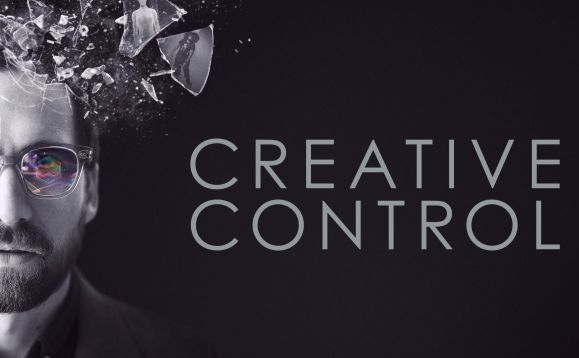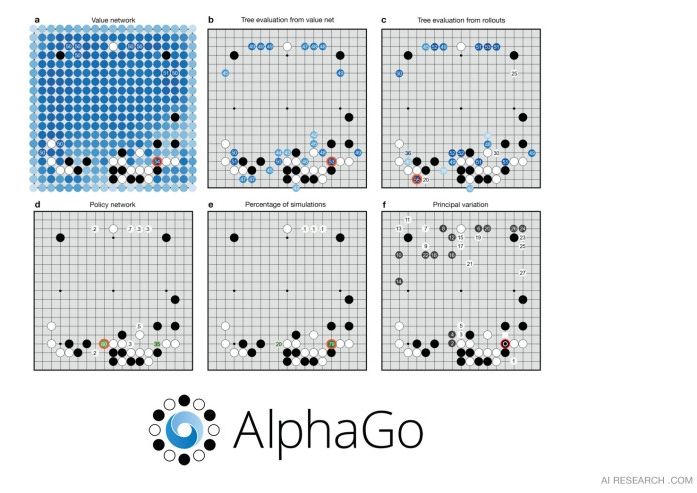Rupert Sanders’ live-action ‘Ghost in the Shell’ movie has added Michael Pitt as the villain, but it’s not the antagonist you might have expected.


Rupert Sanders’ live-action ‘Ghost in the Shell’ movie has added Michael Pitt as the villain, but it’s not the antagonist you might have expected.

A polymer film coating with the ability to turn contact lenses into computer screens is set to transform the wearable visual aids into the next generation of consumer electronics.

These types of movies always come out when society is about to make a huge change in it’s technology that will reshape everything. In the 1950’s we saw movies about alien invasions and run away computers. 60’s & 70’s it was the robots taking over or Dystopia such as West World, Omega Man, Clockwork Orange, then 80’s MadMax and so on. Here we are again with more end of human existance movies because of AI and Quantum. Here is the latest dystopian movie.
This is “The Last Generation to Die — Trailer” by timmaupin on Vimeo, the home for high quality videos and the people who love them.

The widespread use of virtual reality is inevitable, and it’s getting closer and closer. A new movie called Creative Control now takes the tech to the next level, and the results aren’t good.
Written, directed by and starring Benjamin Dickinson, Creative Control premiered at South by Southwest 2015 to solid reviews and finally hits theaters March 11. It centers on an executive whose company has created the next level of virtual reality, in a form that not-so-subtly reminds us of Google Glass. But as things turn to sex—as they tend to do—the virtual takes precedence over the reality.
And yes, that’s Reggie Watts, as himself, in the movie. Which is worth the price of admission alone.

A Lifeboat guest editorial
Richelle Ross is a sophomore at the University of Florida, focusing on statistics and data science. As a crypto consultant, she educates far beyond the campus. Her insight on the evolution and future of Bitcoin has been featured in national publications. Richelle writes for CoinDesk, LinkedIn, and Quora, providing analysis on Bitcoin’s evolving economy.
In 2003, I remember going to see my first IMAX 3D film, Space Station . My family was touring NASA at Cape Canaveral Florida. The film was an inside view into life as an astronaut enters space. As the astronauts tossed M&Ms to each other in their new gravity-free domain, the other children and  I gleefully reached our hands out to try and touch the candy as it floated towards us. I had never experienced anything so mind-blowing in my 7 year life. The first 3D film was released in 1922. Yet, surprisingly, flat entertainment has dominated screens for in the 9½ decades that followed. Only a handful of films have been released in 3D—most of them are animated. But now, we are gradually seeing a shift in how people experience entertainment. As methods evolve and as market momentum builds, it promises to be one of the most groundbreaking technologies of the decade. I foresee Virtual Reality reaching a point where our perception of virtual and real-life experiences becomes blurred—and eventually—the two become integrated.
I gleefully reached our hands out to try and touch the candy as it floated towards us. I had never experienced anything so mind-blowing in my 7 year life. The first 3D film was released in 1922. Yet, surprisingly, flat entertainment has dominated screens for in the 9½ decades that followed. Only a handful of films have been released in 3D—most of them are animated. But now, we are gradually seeing a shift in how people experience entertainment. As methods evolve and as market momentum builds, it promises to be one of the most groundbreaking technologies of the decade. I foresee Virtual Reality reaching a point where our perception of virtual and real-life experiences becomes blurred—and eventually—the two become integrated.
Ever since pen was put to paper, and camera to screen, audiences have enjoyed being swept into other worlds. For those of us “dreamers” being able to escape into these stories is one way we live through and expand our understanding of other times and places—even places  that may not be accessible in our lifetimes. Virtual reality is the logical progression and natural evolution of these experiences.
that may not be accessible in our lifetimes. Virtual reality is the logical progression and natural evolution of these experiences.
I caught the VR bug after one of my Facebook contacts was posting about it and sharing 360 degree videos that were of no use to me unless I too had the headset. Having been a Samsung user for the last several years, I purchased the Samsung VR headset to understand what all the hype was. Just as with my childhood experience visiting the space station, the VR Introduction video sent me floating across the universe. But this time, it was much more compelling. I could turn my head in any direction and experience a vast heavenly realm in 3D vision and tied to my own movements. Behind me was a large planet and in front were dozens of asteroids slowly moving by.
Similar to visiting the Grand Canyon, this is one of those novel experiences you really have to experience to appreciate. Within about ten seconds of trying it out, I had become hooked. I realized that I was experiencing something with far greater potential than an amusement park roller coaster, yet I also recognized that any applications I might imagine barely scratch the surface. This unexpected adrenaline rush is what leads tinkerers to the imaginative leaps that push new technologies into the next decades ahead.
Video games are probably the industry everyone thinks of being affected by this new paradigm. I immediately thought about the Star Wars franchise with its ever expanding universe. It will be a pretty exciting day when you can hold a lightsaber hilt that comes to life when you wear a headset and allows you to experience that universe from your living room. You could even wear a sensored body suit that allows you to feel little zaps or vibrations during gameplay. With more connected devices, the possibility of Li-Fi replacing Wi-Fi and so on, video games are just scratching the surface.
I discussed what the future of VR could offer with Collective Learning founder, Dan Barenboym. We explored various difficulties that impede market adoption. Barenboym was an early enthusiast of virtual reality, having worked with a startup that plans to deploy full-body scanners that give online life to gamers. The project began long before the film Avatar. Berenboym suggests ways that this would improve online shopping  by allowing people to see their avatar with their own personal measurements in various outfits. This doesn’t have to be limited to at-home experiences though. Dan suggests that instead of walking into the boutique changing room, you walk into one with mirrors connected to VR software. Your reflection ‘tries on’ different virtual outfits before you pull your favorite one off the store rack.
by allowing people to see their avatar with their own personal measurements in various outfits. This doesn’t have to be limited to at-home experiences though. Dan suggests that instead of walking into the boutique changing room, you walk into one with mirrors connected to VR software. Your reflection ‘tries on’ different virtual outfits before you pull your favorite one off the store rack.
We also discussed the current obstacles of VR like the headset itself, which is a hindrance in some respects as it is a bit uncomfortable to wear for prolonged use. The other looming issue is money. There are many ideas similar to the ones we brainstormed, but startups may struggle to get off the ground without sufficient funding. The Oculus Rift is one great example of how crowdfunding can help entrepreneurs launch their ideas. It is easier than ever before to share and fund great ideas through social networking.
Facebook creator, Mark Zuckerberg, shared his own vision in 2014 after acquiring the Oculus Rift. Zuckerberg eloquently summarized the status of where we’re headed:
“Virtual reality was once the dream of science fiction. But the internet was also once a dream, and so were computers and smartphones. The future is coming and we have a chance to build it
together.”
What could this mean for the social networking that Zuckerberg pioneered? I’d venture to say the void of a long distance relationship may be eased with VR immersion that allows you to be with your family at the click of a button. You could be sitting down in your apartment in the U.S., but with the help of a 360 camera, look around at the garden that your mother is tending to in the U.K. The same scenario could be applied to a classroom or business meeting. We already have global and instant communication, so it will serve to add an enriched layer to these interactions.
The concept of reality itself is probably the biggest factor that makes virtual reality so captivating. Reality is not an objective experience. Each of us has a perspective of the world that is colored by our childhood experiences, personality, and culture. Our inner dialogues, fantasies of who we want to become, and areas of intelligence determine so much of what we’re able to accomplish and choose to commit to outside of ourselves. Michael Abrash describes how VR works with our unconscious brain perceptions to make us believe we’re standing on the edge of a building that isn’t really there. At a conscious level, we accept that we are staring at a screen, but our hearts still race—based on an unconscious perception of what is happening. Tapping into this perception-changing part of our brain allows us to experience reality in new ways.
As VR becomes more mainstreamed and incorporated into all areas of our lives such as online shopping, socializing, education, recreation, etc., the degrees of separation from the real world that society applies to it will lessen. Long-term, the goal for VR would be to allow us to use any of our senses and body parts. We should see continued improvements in the graphics and interaction capabilities of VR, allowing for these experiences to feel as real as they possibly can.
One can only imagine the new vistas this powerful technology will open—not just for entertainment, but for education, medicine, working in hazardous environments or controlling machines at a distance. Is every industry planning to incorporate the positive potential of virtual reality? If not, they certainly should think about the potential. As long as we pay attention to present day needs and issues, engineering virtual reality in the Internet of Things promises to be a fantastic venture.
Author’s Note:
Feedback from Lifeboat is important. I’ll be back from time to time. Drop me a note on the comment form, or better yet, add your comment below. Until then, perhaps we will meet in the virtual world.
— RR

Windows 95 just won’t die. The older it gets, the more versatile it becomes. We’ve seen it running on smartwatches, tablets, and handheld consoles — and now you can run it right inside your web browser in an instant.
Andrea Faulds, a 19-year-old developer from Scotland, has been able to get Windows 95 running in almost any web browser using emscripten, an emulator that converts C++ code to JavaScript in real-time. It requires no downloads, plugins, or any special software.
The emulator takes a minute to load up, but once you’re inside it, it’s surprisingly snappy. It provides you with a full Windows 95 operating system and everything you’d expect to get with it — including classic games like Solitaire and Minesweeper — and it runs incredibly well.

The game of Go has long been viewed as the most challenging of classic games for artificial intelligence due to its enormous search space and the difficulty of evaluating board positions and moves.
Google DeepMind introduced a new approach to computer Go with their program, AlphaGo, that uses value networks to evaluate board positions and policy networks to select moves. These deep neural networks are trained by a novel combination of supervised learning from human expert games, and reinforcement learning from games of self-play. Without any lookahead search, the neural networks play Go at the level of state-of-the-art Monte-Carlo tree search programs that simulate thousands of random games of self-play. DeepMind also introduce a new search algorithm that combines Monte-Carlo simulation with value and policy networks. Using this search algorithm, our program AlphaGo achieved a 99.8% winning rate against other Go programs, and defeated the European Go champion by 5 games to 0. This is the first time that a computer program has defeated a human professional player in the full-sized game of Go, a feat previously thought to be at least a decade away.

Fractured space is the title of this article which highlights the drastic changes occurring in space. However, it does raise a question around “what could be the broader impacts resulting from future space colonization and mining operations on asteroids and planets/ moons?”
Pretty much the only time I compete online is in the world of MOBAs. Fractured Space has been going through a huge amount of changes, tweaks and updates but is heading firmly towards the ultimate goal of a final build. It’s a good start setting off in a sci-fi universe as pretty much every single MOBA worth playing is set in a fantasy world. There’s nothing wrong with orks and elves gameplay but giant capital ships blasting away at each other in deep space holds a greater appeal to me. First though, Fractured Space has a lovely new video to take a look at so sit back enjoy.
A few alterations to the core MOBA gameplay set Fractured Space apart from the rest. Team wide resources are a consideration with the team holding the most outposts generating the most resources. The key to winning the battle of resources is undoubtedly to maintain control of the gas mining station that resides in the centre of the map. There are only short windows of opportunity to take control of the station however and you can be sure that a battle will take place whenever the timer allows it. It’s such a valuable resource that you just can’t ignore it.

The company’s new program, called Quill, allows an illustrator to create work directly in VR—and then turns the drawings into animations.

We’re going to see many more of these types of announcements coming — Inside Lucasfilm’s “Star Wars” VR Project.
The ILMxLab expects to make many more VR experiences for “Star Wars” and other films, and for every VR platform.